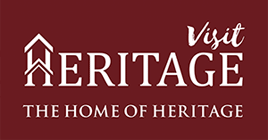To build your own Itinerary, click  to add an item to your Itinerary basket.
to add an item to your Itinerary basket.
Already saved an Itinerary?



You are here: UK History > The Middle Ages > The Dark Ages
The period between the end of the Roman occupation and the Norman conquest is known to historians as the Dark Ages because of a lack of record keeping and the various divisions of the country. Other reasons for name have been theorised because the time immediately after the Romans was seen as a time of ignorance rather than one of enlightenment. This train of thought tends to come from historians that were more biased towards the Romans however, and many modern historians reject the term, preferring to refer to this era as the early Middle Ages. Whatever the reason, the kingdom that would emerge after the Battle of Hastings would form the England that we know today.
Records after the Romans are difficult to find, as they were the main record keepers, their withdrawal from Britain took place over a long period of time, and records became increasingly more difficult to trace during this time.
The main issues for Britain following the withdrawal of the Romans were raiders from Scandinavia, known as the Vikings, Irish raiders from the west and Picts from the North. The Britons successfully attacked these invaders and it is during this time that stories of a King Arthur started to emerge. A record from the time credits him with 12 battles from Scotland to the south of England. Whether or not Arthur actually existed remains to be seen.
During the Dark Ages, religion began to divide the British population. In Britain, Christianity was starting to gain popularity, while the invaders, mostly from Scandinavia were Pagan. From around the year 595 onwards, many of England’s rulers were converted by Roman and Irish missionaries, which helped establish an English Church.
It was at this time that the church replaced the Roman Empire as the most powerful church in Europe and completely redefined the relationship between the religious authorities and world leaders. Monarchs especially would claim their power from the church, which would become known as the Divine Right of Kings.
St Augustine was a significant figure in the establishing the English Church. He arrived in England from Rome to bring Christianity to the country and became the first Archbishop of Canterbury. He would also establish one of the most important abbeys in the age. It is believed that he was living as a monk in Rome before being chosen to lead the mission to convert the Anglo-Saxons following the Roman withdrawal to Christianity which had lost its way after the arrival of the Vikings.
Augustine arrived in Kent and met with the region’s king, Aethelberht, who was married to a Christian woman, Queen Bertha. This probably aided his decision of where to start his mission and though Aethelbehrt did not immediately convert to Christianity, he did treat Augustine with hospitality, giving him the freedom to preach and reside in what would become Canterbury, which at that time was the capital of Kent. Augustine would hold services in the Church of St Martin’s, which was the queen’s favoured church. Eventually, Aethelbehrt did convert and the abbey of St Peter and Paul was founded. The abbey would later be rededicated to St Augustine himself and he would become the first Archbishop of Canterbury.
Aethelbehrt provided protection to the newly established Christian church and Augustine was allowed to help shape the future of Christianity in the area. He would eventually die around 609 and Christianity would continue to spread around the other English kingdoms. The Christianisation of the Anglo-Saxons was completed in around the 7th century.
© Visit Heritage 2025. All Rights Reserved

.png)


